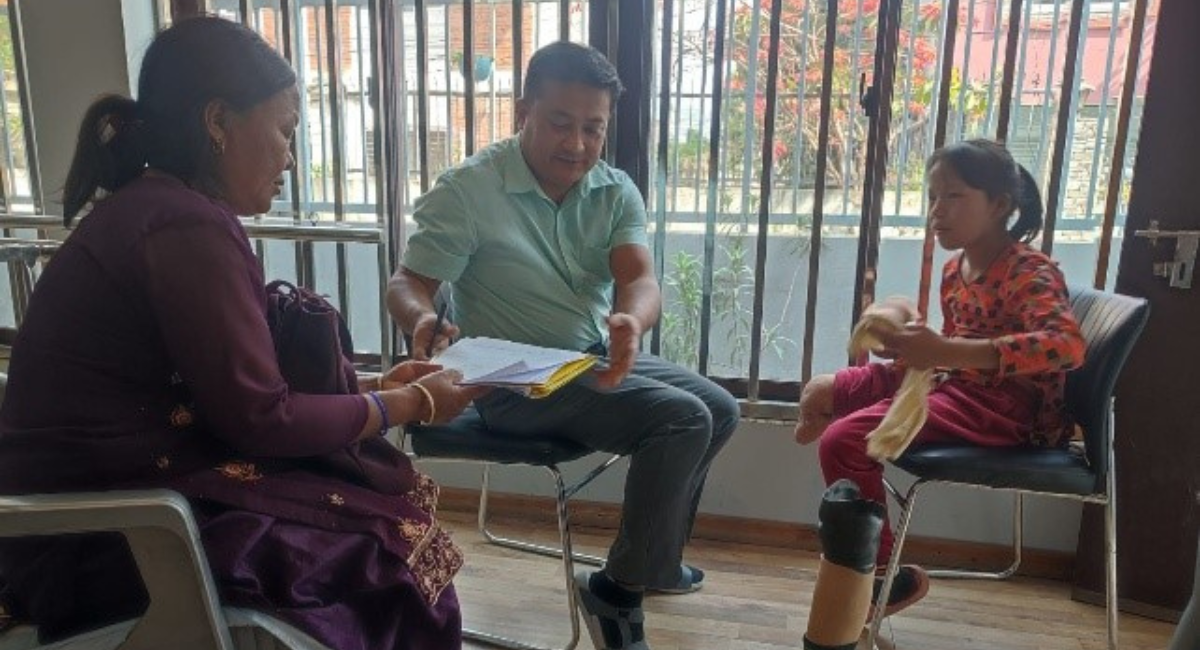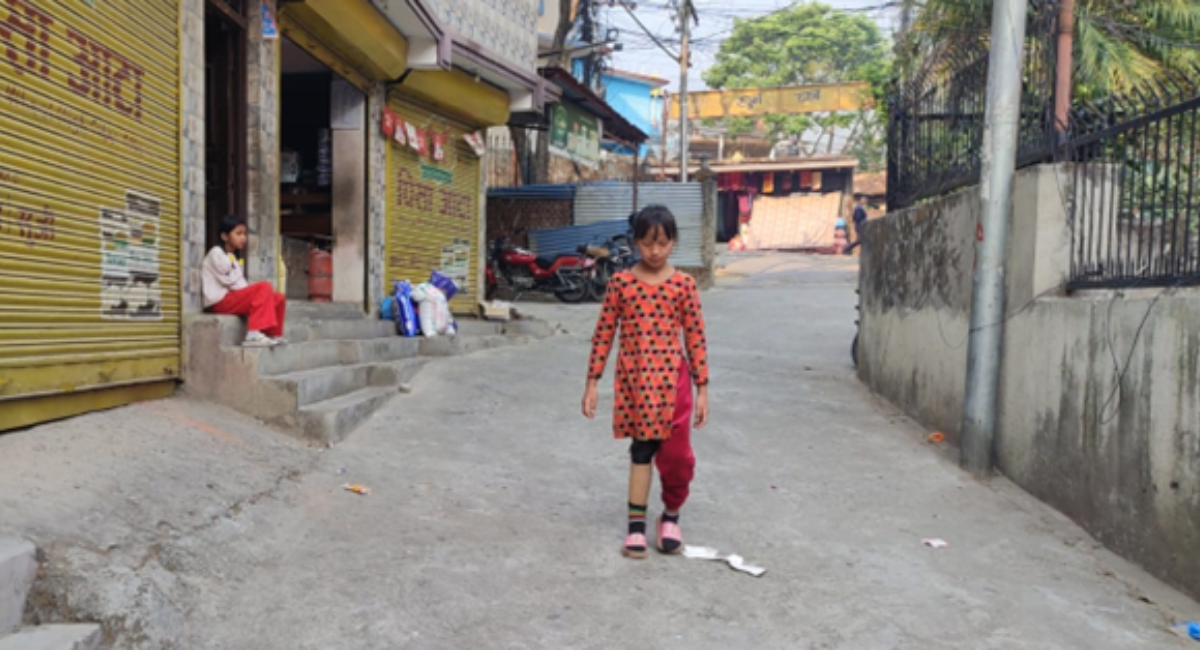Man Kumari, 11 years old’s Journey: Walking Towards Independence with a 3D-Printed Prosthetic Leg
In a quiet village nestled in the hills of rural Nepal, 11-year-old Man Kumari begins her day at sunrise. Her mother, a single parent raising three children, watches with pride as Man Kumari prepares to walk to her school - an hour away - through rocky paths and muddy trails. Just a few years ago, this daily journey was unthinkable.
At the age of five, Man Kumari lost her right leg due to an infection. For years, she relied entirely on her mother’s back to reach school or move around the village. Her mother, who supports the family through subsistence farming and livestock herding, receives a small monthly government allowance (NPR 2,600 for single women and NPR 4,000 for persons with severe disabilities), but this barely covers basic necessities.
Now, Man Kumari walks to school on her own - on a new 3D-printed prosthetic leg provided through the UK International Development funded AT2030 programme and UNICEF Nepal and implemented by the Global Disability Innovation Hub (GDI Hub), Centre for Disabled Children Assistance and the Enabling Fridays Consortium. In 2024, the Enabling Fridays Consortium team in Nepal provided 75 prosthesis support to 67 users including 20 children with disabilities.
“I like my foot,” she beamed during her follow-up visit. “This one is more comfortable, lighter, and feels better than the other one.”
The previous prosthesis - provided by a local NGO three years ago - had become tight and painful as she grew. Children with limb loss often outgrow their prostheses every 6–12 months. Without proper refitting or replacement, the device can cause wounds, discomfort, and limit mobility.
Man Kumari and her mother walked three hours from their village to catch a bus to Kathmandu, followed by a 10-hour journey to reach the clinic. This travel burden - made worse during monsoon seasons by landslides and road closures - is a stark reminder of the challenges rural families in Nepal face when seeking specialised health services. Despite Nepal’s minimal contribution to global carbon emissions, it bears a disproportionate burden of climate-induced natural disasters, further compounding access barriers for rural children like Man Kumari.

At the clinic, a certified prosthetist from the Enabling Fridays Consortium team conducted a full clinical and digital assessment. Her limb was scanned using 3D technology, digitally modelled, and fabricated using polypropylene filament. The prosthesis was then assembled and fitted, followed by gait training to ensure proper posture and mobility.
Since then, Man Kumari has worn her new prosthetic leg up to 12 hours a day. She enjoys walking to school, fetching water, helping her mother with chores, and most importantly, playing chungi - a beloved Nepali children’s game - with her friends. She also dances, cooks, and even makes TikToks with her older sister.
“She cooks and helps in household work when I’m away,” her mother shared. “I used to carry her to school, but now I’m relieved. She goes on her own, helps with the goats and chickens, and even starts the cookstove for our meals.”
But even with the new device, concerns remain. At a recent follow-up and repair visit, the project team replaced her worn-out foot, adjusted the socket for better comfort, and secured loose screws to improve posture. Her mother had travelled again for over 10 hours to reach the clinic, leaving her other children behind.
“I’m happy now,” she said. “But this prosthesis will need replacing again soon. I worry about how I’ll afford a new one as she grows. She’s just 11 now… how would I manage her prosthesis until she’s 22?”
Despite these concerns, her mother remains optimistic. She believes in her daughter’s future and in the power of education. The mother added:
“She doesn’t have one leg - but if she studies well, she can feed herself in the future. Education is her only strength.”
She expressed heartfelt thanks to all involved in supporting her daughter:
“I’m very happy that we received this support. Without it, we could never afford a new leg or the repairs. Our income just covers our daily basic needs. Thank you to all those who thought of us.”
Through inclusive innovation, local fabrication, and continued follow-up care, the AT2030 programme is not just providing assistive devices - it is enabling freedom, participation, and dignity to the children like Man Kumari and more.
Man Kumari’s steps are small, but they are bold - and they are hers.
